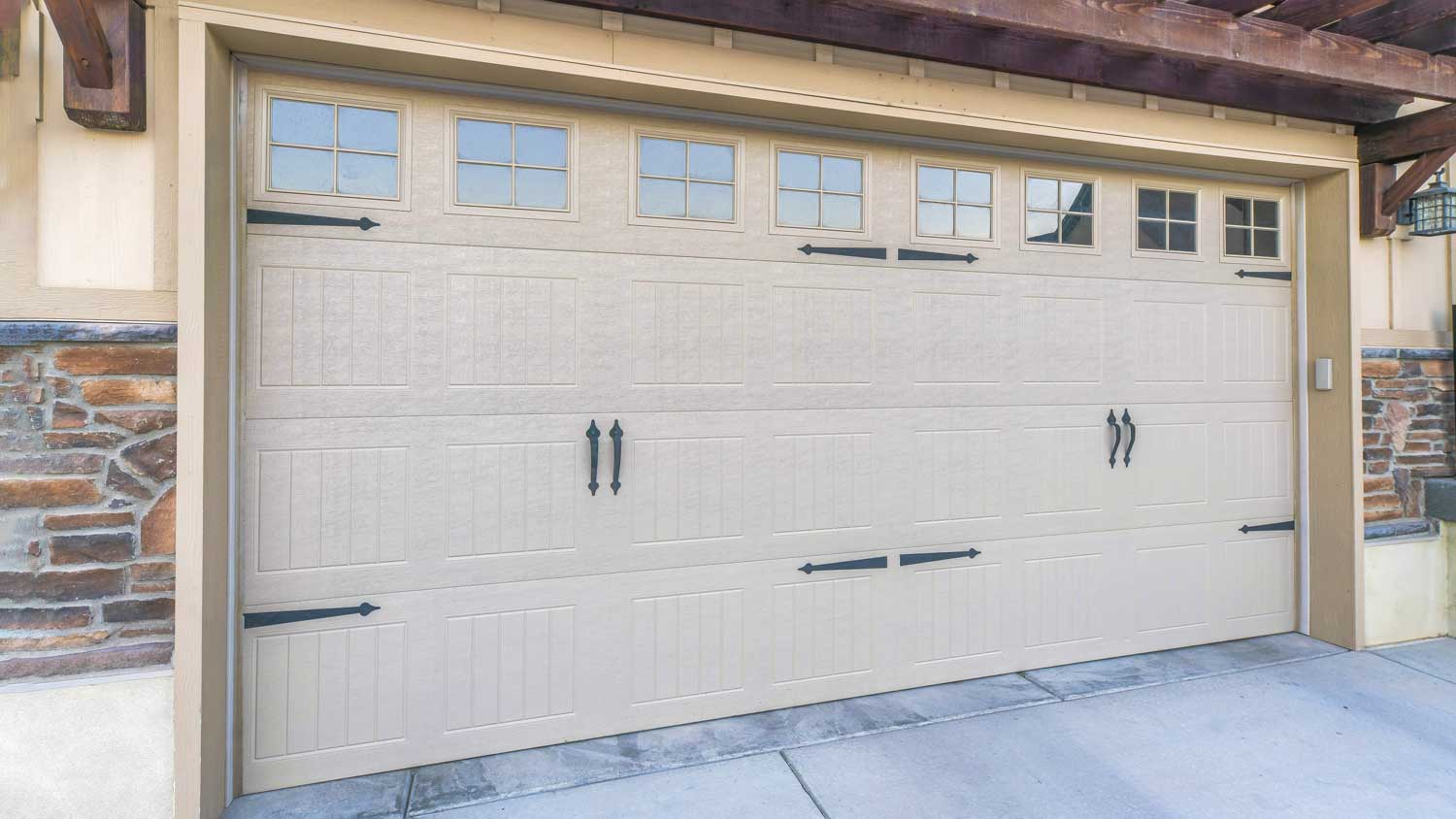.jpg?impolicy=leadImage)
This guide shows you what you can expect for garage door roller replacement cost if your rollers are sticking or screeching.
Avoid sudden garage door repair by studying up on wind code ratings


Wind-rated garage doors help protect against wind and storm damage that occurs during hurricanes, tornados, and other extreme weather events.
Look for a label on the interior of your garage door to determine its wind code rating and relevant specifications.
Wind ratings present as a series of figures, including a maximum wind strength rating in miles per hour (MPH) and a measurement of how much pressure the door withstands before breaking, illustrated in pounds per square foot (PSF).
If your garage door is not wind-rated, purchase and install a new door or reinforce the pre-existing one.
Your home’s garage door certainly seems sturdy, but can it stand up to the most vicious of windstorms? Nothing ruins a nice night in with the family, after all, then a force gale wind tearing apart your garage.
Luckily, modern garages doors typically feature a wind code rating to indicate their wind-bearing strength. Here is everything you’ve always wanted to know about wind code ratings, which should reduce your need to call a local garage door professional after a storm.
Any homeowner benefits from the strength and durability of a wind-rated garage door. However, homes in hurricane-prone regions of the country, such as the east coast, and tornado-prone regions, should absolutely boast a suitable wind code rating. Just as storm windows offer protection from the elements, wind-rated garage doors are a form of wind mitigation that protects the structural integrity of your garage and the rest of your home.
Garage door failure contributes to the buildup of internal pressure during a storm, leading to a complete or partial blowout of walls and roofs.
Your garage door’s wind code rating indicates just how much wind and wind-borne debris it withstands before issues arise. Each region’s building authority designates its own garage door strength rating based on local weather patterns.
Florida, for example, has three regions of wind-borne debris levels. They range from 130 mph to 140 mph to a high-velocity zone. A wind code rating, then, includes the maximum wind speed the door can withstand and a metric called PSF.
Pounds per square foot (PSF) is a measurement of pressure the garage door withstands, via wind or wind-borne debris. Also known as design load, this value indicates resistance in both positive and negative directions toward the door.
Positive pressure indicates the amount of wind blowing against your door and negative pressure indicates the amount of wind pulling or sucking your door outwards. As such, design pressures express as both positive (PSF+) and negative (PSF-) values. The higher the value, the more weight the door handles before buckling. The standard wind load value is around 20 PSF.

If your garage door is wind-rated, look for a large sticker or label on the side of the door that faces the inside of your garage when closed or unrolled. This sticker should feature the maximum MPH rating (anywhere from 74 to 180 MPH), a PSF+ value, and a PSF- value.
If you live in Florida, the sticker could also feature a dedicated wind value rating of W-1 to W-9. The higher this “W” rating, the stronger the door.
A full 80% to 90% of garage doors away from the coastline are not wind-rated, according to a study conducted by the Insurance Institute for Business and Home Safety. As a matter of fact, no state in the country required garage doors to meet any wind-related safety standards until 2006. If your home predates 2006, it is likely your garage door won’t stand up to hurricane-force winds. So what can you do? You have two options.
Weather patterns are changing in recent years, so even homeowners located away from the coastline are at-risk for dangerous storms and tornados. In other words, to improve the security of your home, replace the garage door with one that has been built for wind resistance, and avoid installing the garage door yourself because of several risks you could run into.
This will protect your home from wind, debris such as flying sticks, flooding, and any other kind of storm damage. Additionally, some parts of the country offer insurance premium discounts to homeowners with a wind-rated garage door.
In Miami, for example, the insurance premium on a $150,000 home with no hurricane mitigation is around $5,000. With improvements like a wind-rated garage door, that same home’s premium drops nearly 30 percent.
If installing a brand new garage door is out of your current price range, you can always brace your pre-existing door to build up its wind resistance. You can reinforce your door temporarily with a brace, ahead of severe weather, or go for a more permanent solution.
Many garage door companies and contractors will install metal reinforcement beams on your door, iron castings riveted to the door’s slats, guide assembly bars, and other wind-resistant add-ons. Reinforcing a pre-existing garage door, however, is not as effective as installing a brand new purpose-built door. Every little bit helps though.
From average costs to expert advice, get all the answers you need to get your job done.
.jpg?impolicy=leadImage)
This guide shows you what you can expect for garage door roller replacement cost if your rollers are sticking or screeching.

This guide will help you determine the true cost of installing garage door openers. You’ll need to consider type, horsepower, and other factors.

Our guide breaks down pricing factors, spring types, and why professionals help ensure safety and longevity. Learn what to expect and budget for your repair.

From pests to weather, garage door bottom seals keep your space clean, dry, and insulated. Explore six options and find the best one for your garage.

Is your garage door frozen shut and preventing access? Use this simple how-to guide to fix the problem and take back your covered parking space.

Wondering why your garage door light is blinking and not opening? Let’s look at three common causes, including an activated safety lock and blocked sensor.